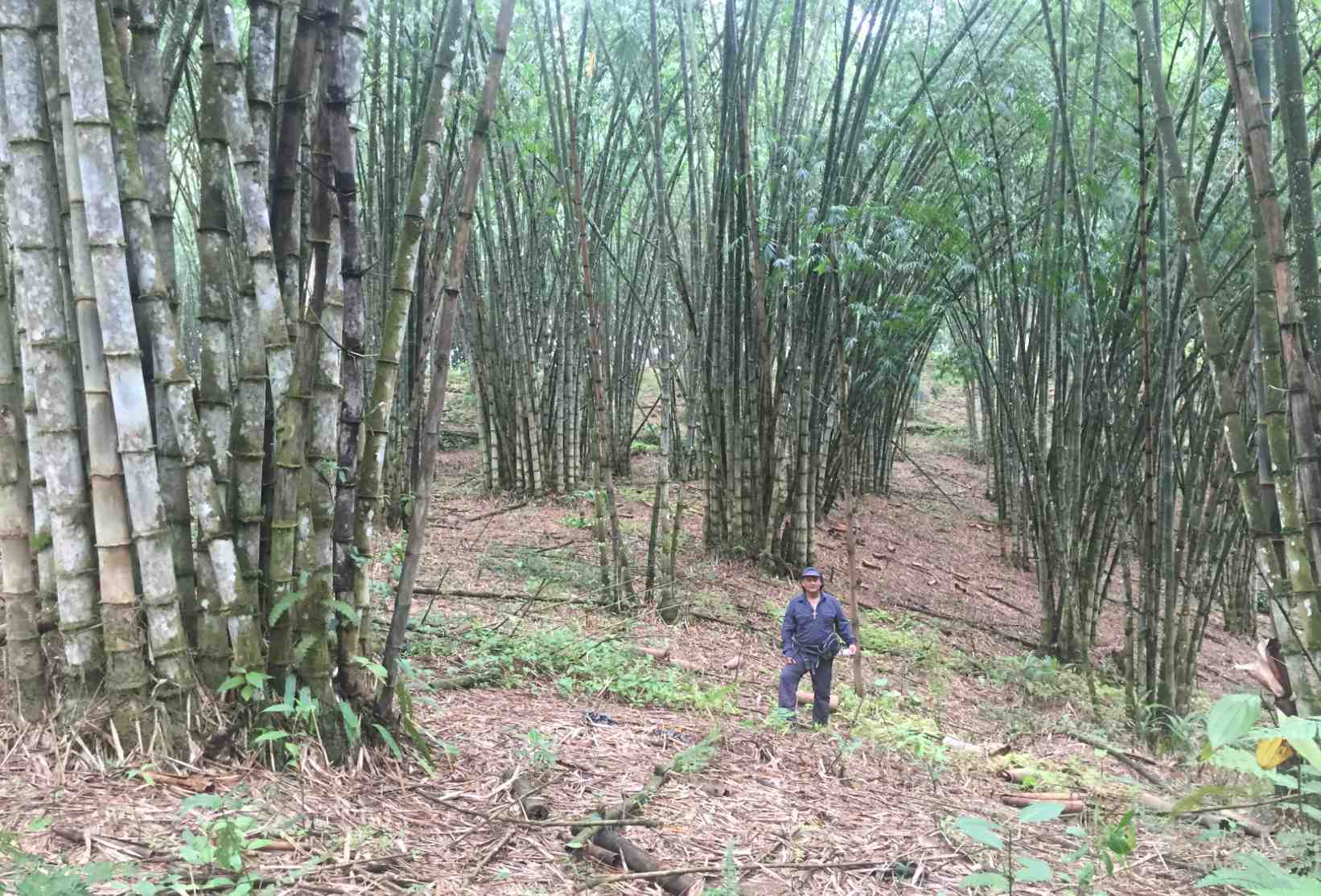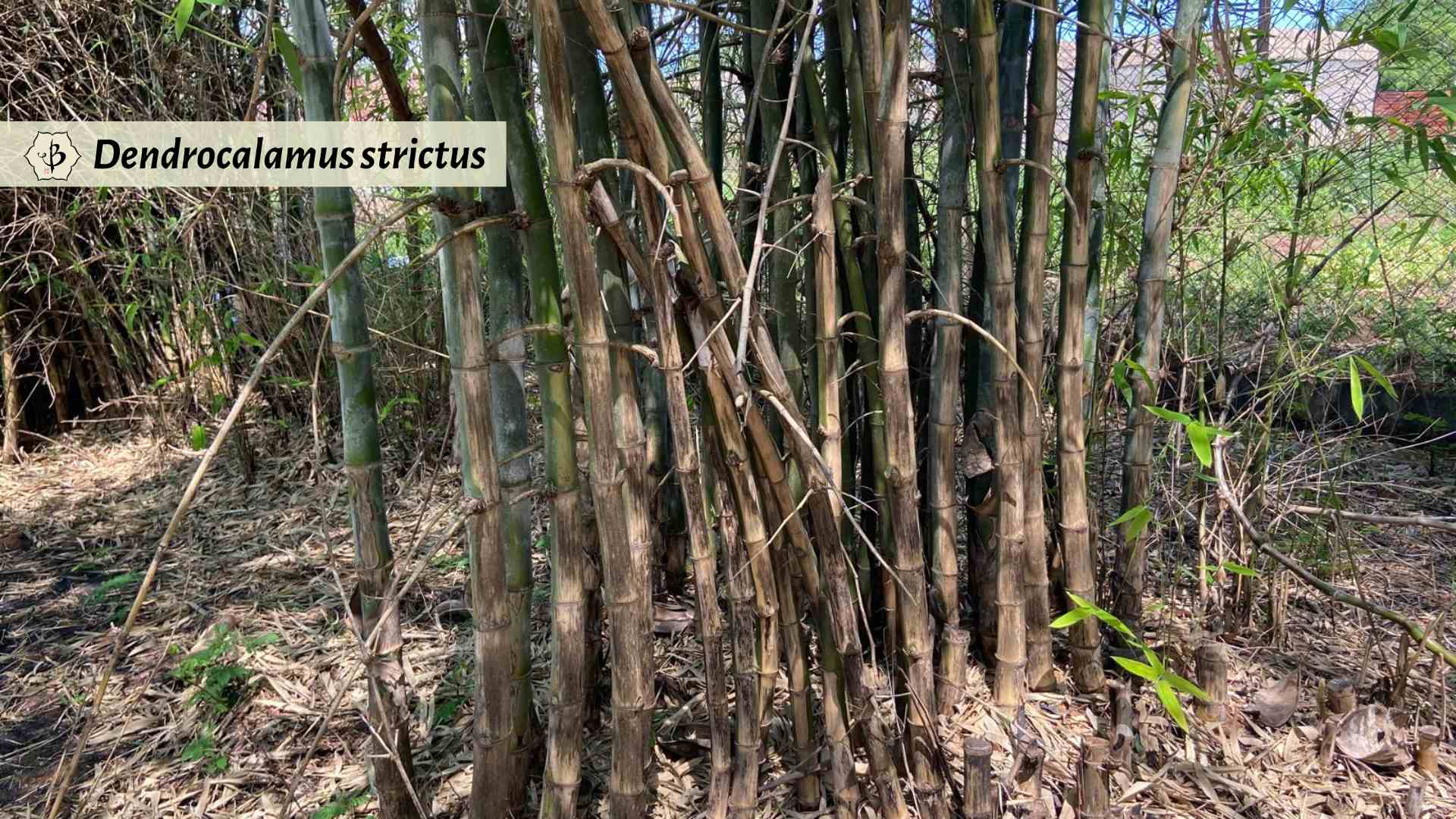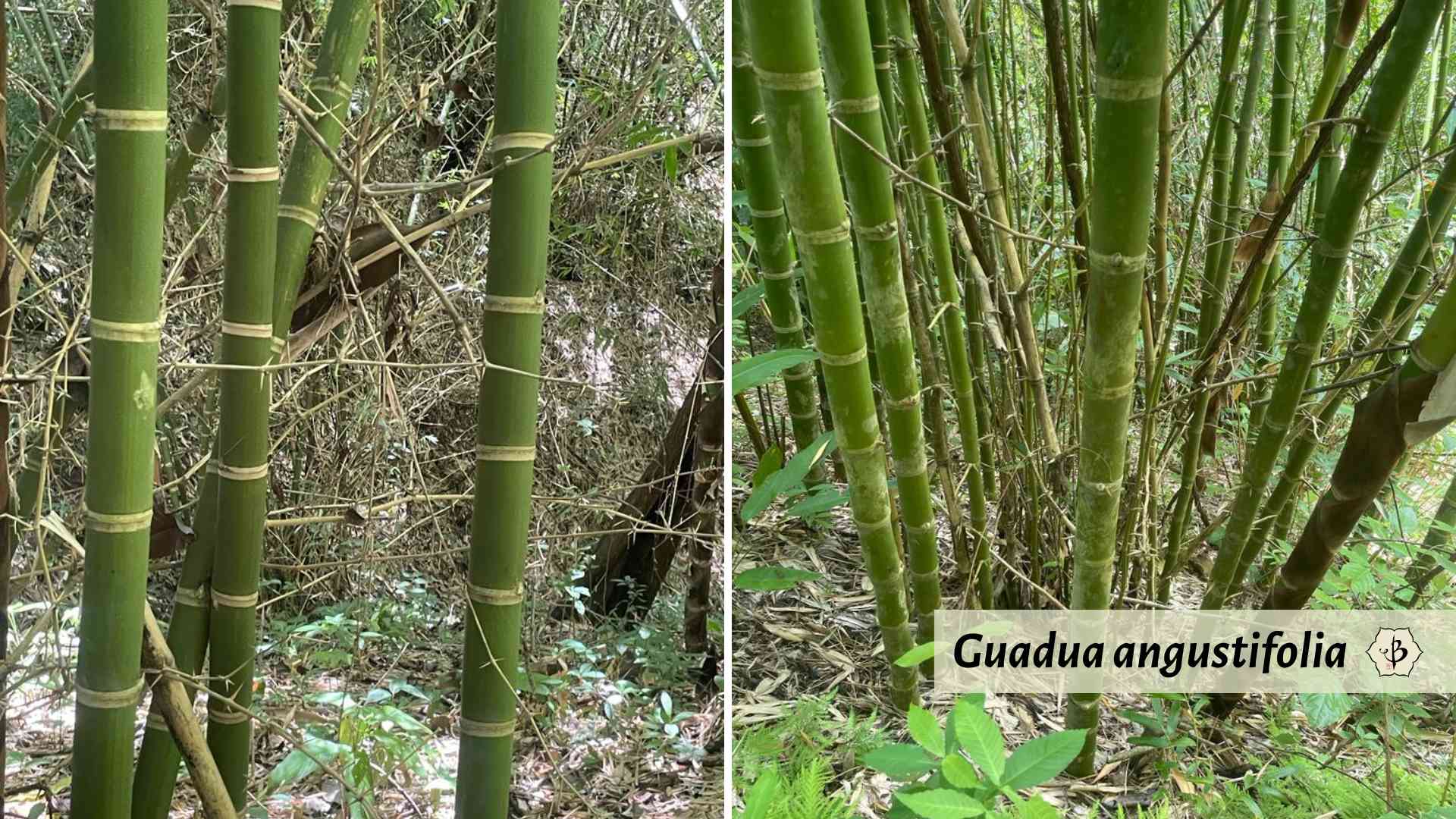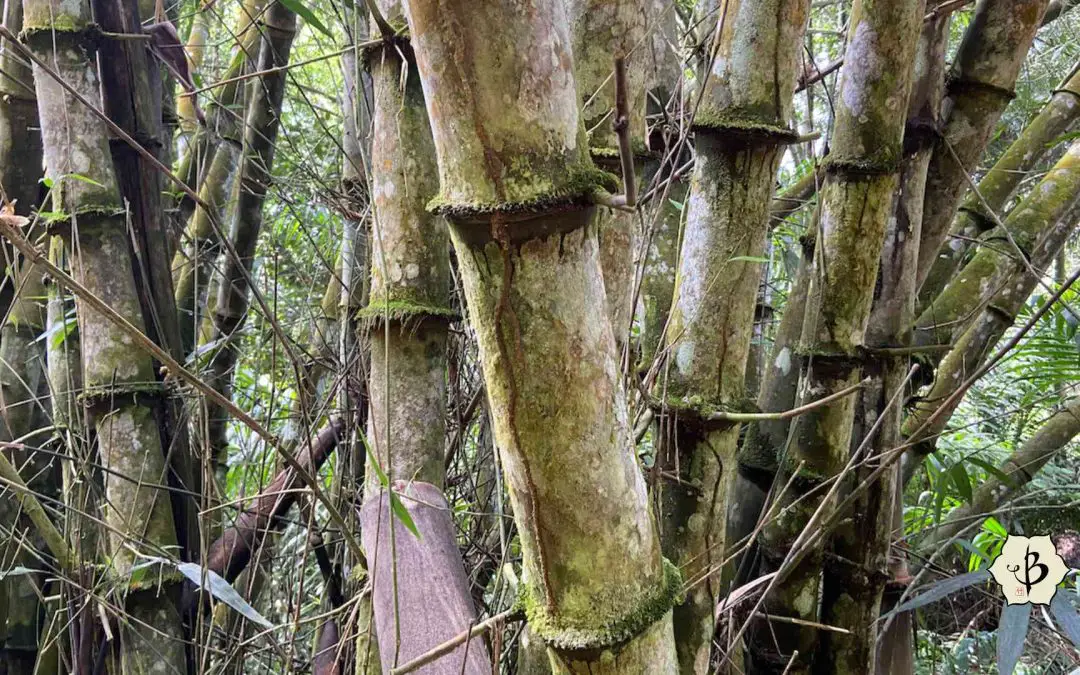The remarkable strength of bamboo has long invited comparisons to more industrial materials like iron and steel. And while certain more graceful and whispy varieties take on names like Seabreeze, Buddha Belly, and Umbrella Bamboo, a handful of the most formidable species have earned the title of Iron Bamboo.
Iron Bamboo can refer to several different species with the greatest size, strength, and suitability for construction. The name is most often identified with Guadua angustifolia in Latin America, and Dendrocalamus asper or Dendrocalamus strictus in Southeast Asia. In the realm of sustainable construction, enthusiasts frequently compare bamboo to steel, based on its exceptional strength-to-weight ratio. Although it’s not entirely accurate to claim that bamboo is stronger than steel.

What is Iron Bamboo?
Among the 1,600+ known species of bamboo, none is formally identified as Iron Bamboo, but several have earned that unofficial title. Unlike the scientific names that use binomial nomenclature, common names and local names spring up organically, and they can vary from region to region. As a rule, the name Iron Bamboo refers to the biggest and strongest varieties, and the ones that are most widely used and valued. Iron Bamboo is most suitable for construction and can serve as a substitute for steel.
Dendrocalamus asper
Commonly known simply as Asper, this is one of the most highly-valued and widely cultivated species in the world. Other names include Dragon Bamboo and Iron Bamboo. Native to the tropics of Indonesia and Southeast Asia, Asper thrives in wet, balmy climates. Under optimal conditions, mature culms can reach 100 feet in height and more than 5 or 6 inches in diameter.
In addition to their superior strength, Asper culms are also very straight with dense fibers. Unlike many giant bamboo species, the branches don’t start until about halfway up the plant, which makes it more attractive and much easier to manage. Asper can be distinguished from other species of Dendrocalamus by its furry nodal joints. This feature has earned it yet another nickname, Rough Bamboo.

Beyond its native territory, farmers now cultivate Asper across the globe, in Africa, South America, and Florida. It has proven to be an adaptable species on multiple continents, so long as the winters don’t get too cold. Sub-freezing temperatures will stunt its growth. Many cultivate this variety for building materials, and it’s also grown for carbon sequestration and for Carbon Credits.
Dendrocalamus stocksii
A mid-sized, non-thorny, loose-clumping bamboo native to southern India, D. stocksii plays an important part in the local furniture-making industry. Like other species of Dendrocalamus, it is sometimes referred to as Iron Bamboo for its tremendous strength.
The species is indigenous to the humid tropics and is not widely known outside of Central Western Ghats, in the Kerala state of India. Culms grow up to 2 or 3 inches in diameter and about 30 feet in height. Farmers prefer D. stocksii to other timber bamboo species of the region, like Bambusa blumeana, which produces menacing thorns.

Dendrocalamus strictus
Somewhat less gracefully than Asper, with its dense thicket of lateral branches that start at ground level, D. strictus has exceptionally strong culms because they are often solid, or nearly solid, rather than hollow. Closer to the base, they are more likely to be solid, and lack of water also causes the culm walls to grow thicker and more solid. This thickness or solidity results in great structural strength, hence the name Iron Bamboo. Other common names include Calcutta Bamboo or Male Bamboo in India and Bambu Batu in Malaysia.
Like other species of Dendrocalmus, this bamboo requires a warm, tropical climate to thrive. But in contrast to sleek varieties like D. giganteus, the profusion of branches near ground level make D. strictus rather unattractive as an ornamental.

Guadua angustifolia
If someone in South America mentions Iron Bamboo, you can be sure that they’re talking about Guadua angustifolia. And many will argue that no other species deserves the moniker of Iron Bamboo more than this neotropical giant. Native to the equatorial highlands of Colombia, Guadua (as it’s usually known) grows through the tropical mountains of Latin America.
Among the largest of any bamboo species, plants in their native habitat can exceed 100 feet in height, and easily reach 5 or 6 inches in diameter. Culms are remarkably straight with smooth nodal joints that make them ideal for construction. Of course, they are as strong and sturdy as any bamboo you’ll find. Many will tell you it’s the hardest bamboo of all. In South America and around the globe, Guadua is revered and has been used to build some extraordinary structures and pavilions.
Although it’s clumper, like most tropical bamboo, it has a more open growth habit than most clumpers. In some ways, this makes it easier to manage and harvest the poles, because they are not bound up in a tight cluster. On the other hand, the branches have some pernicious thorns that make it quite difficult to work with.
Some bamboo enthusiasts have attempted to cultivate this giant in other parts of the world, like Africa and Southeast Asia, but success has been very limited. Guadua seems to prefer the mountain air of Colombia, Ecuador, and Panama. But time will tell if it can be adapted to other Equatorial montane locations such as Indonesia or Uganda.

Is it stronger than steel?
Many bamboo advocates have claimed that bamboo is stronger than steel. Unfortunately, such bold claims can harm the credibility of the bamboo community. There’s no doubt that bamboo is extremely versatile, and its strength-to-weight ratio is phenomenal. That’s because the hollow poles make the wood lighter — and more flexible — than traditional lumber.
The tensile strength of bamboo will vary depending on a variety of factors. Of course, the choice of species will be pivotal. The ones listed in this article, naturally, are among the strongest. But other bamboo species can be pretty flimsy. The growing conditions, especially the climate and the availability of water can have an enormous impact on the wall thickness and the fiber density.
The orientation of the bamboo culms will also make a drastic difference. Vertically, from end to end, bamboo poles are extraordinarily strong. Laid down horizontally, however, their weight-bearing capacity is more limited. The strongest points will be at the nodal joints, where the bamboo is solid. So the length of the internodes will play another factor. And solid bamboo varieties like Chusquea and Tam Vong, have their own definitive advantages.

Forge ahead
If you wish to learn more about the great strength and diverse industrial application of bamboo, take a look at some of these other in-depth articles from our website.
FEATURE IMAGE: A dense thicket of Dendrocalamus asper in the foothills of the Malaysian peninsula. Photo by Fred Hornaday.

























